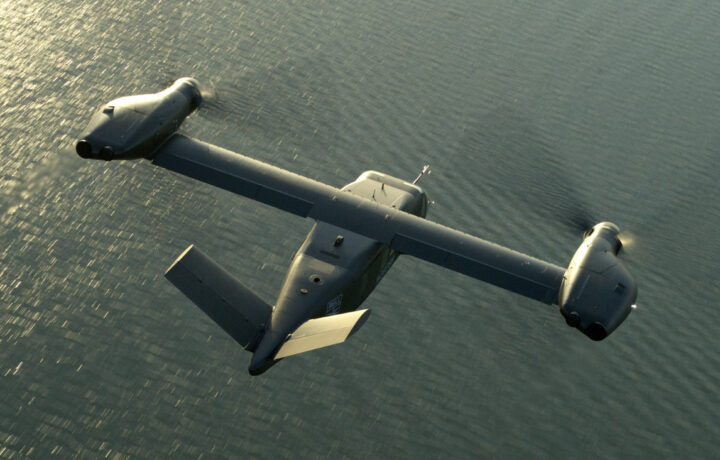There was no failure to launch for the United States Army’s Future Long Range Assault Aircraft (FLRAA) program – and last week, senior service officials signed off on the Milestone B, which will clear the way for Bell to develop six prototypes of its V-280 Valor. The service announced in December 2022 that Textron’s Bell subsidiary was selected to develop the FLRAA, which is on track to be the Army’s largest helicopter procurement in 40 years.
“[It] demonstrates the Army’s commitment to our highest aviation modernization priority,” said the Army Acquisition Executive Douglas R. Bush. “FLRAA will provide assault and MEDEVAC capabilities for the future Army, adding significantly increased speed, range, and endurance.”
The 2022 contract with the Army included nine options, and the Milestone B allows the service to exercise the first option, which includes detailed aircraft design and the aforementioned six prototypes. The current timeline will see the first aircraft make its maiden flight in 2026, while low rate initial production (LRIP) is now scheduled to begin in 2028, while it is on track to enter service in 2030.
The service will continue to “review and refine the schedule as necessary,” it acknowledged, “based on the contract award and the latest program activities.”
The Army’s Aircraft of the Future
The FLRAA is an $80 billion program – including an initial $7.1 billion contract – that could see the service acquiring thousands of next-generation tiltrotor aircraft. The green light from the U.S. Army marked the beginning of the weapon system’s Program of Record (PoR) the company announced on Monday.
“This achievement marks a historic moment for both the U.S. Army and Bell,” explained Ryan Ehinger, senior vice president and program director for Bell Textron’s FLRAA program. “Now that the program has Milestone B approval, the course is set for delivering transformational capability to the warfighter. The FLRAA team remains laser-focused on working in tandem with the U.S. Army to execute the next phase of Engineering and Manufacturing Development (EMD).”
Bell has been working towards reaching Milestone B since April 2023, when U.S. government auditors “affirmed” the aerospace firm as the FLRAA vendor, and dismissed a challenge mounted by Lockheed Martin’s Sikorsky, aviation trade magazine Flight Global reported.
The Sikorsky-Boeing jointly developed SB-1 Defiant X had been edged out in the Army’s competition to develop a new aircraft, which will eventually replace the UH-60 Black Hawk.
“The FLRAA Milestone B decision is another successful step of a deliberate modernization effort by the Army,” said BG Cain Baker, director for the Future Vertical Lift Cross Functional Team. “The many stakeholders, including academia and industry, have worked hard to ensure rigorous technology development and demonstration and have informed FLRAA requirements and affordability. FLRAA’s speed, reach, and survivability will be key to transforming US Army maneuver.”
Platform for the Pacific
The Bell V-280 Valor is a tiltrotor aircraft that can take off and land like a helicopter but then fly like an airplane – providing both speed and range. That combination could make it well-suited to operations in the Pacific, where it could be employed in an “island hopping” campaign against an adversary such as China.
“It will expand the depth of the battlefield, extending reach to conduct air assault missions from relative sanctuary while enabling us to rapidly exploit freedom of maneuver to converge ground forces through decentralized operations at extended distances. FLRAA’s inherent reach and standoff capabilities will ensure mission success through tactical maneuver at operational and strategic distances,” the Army explained of the FLRAA’s capabilities.
“Future battlefields require expanded maneuver, the ability to sustain and provide command and control across vast distances, and of course, evacuate our wounded,” added the U.S. Army Aviation Branch chief Maj. Gen. Michael McCurry. “All of these apply to both conventional and Special Operations Forces. With roughly twice the range and twice the speed, FLRAA brings unmatched combat capability to the joint force.”




